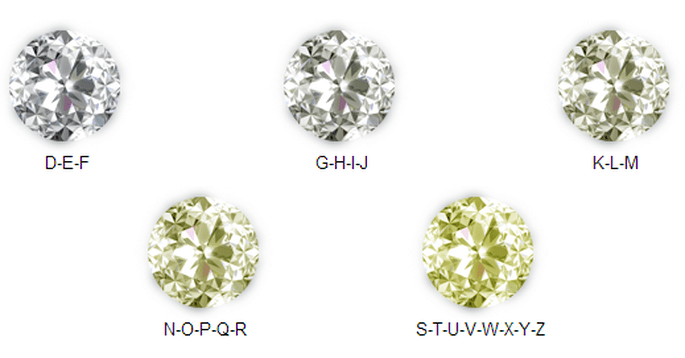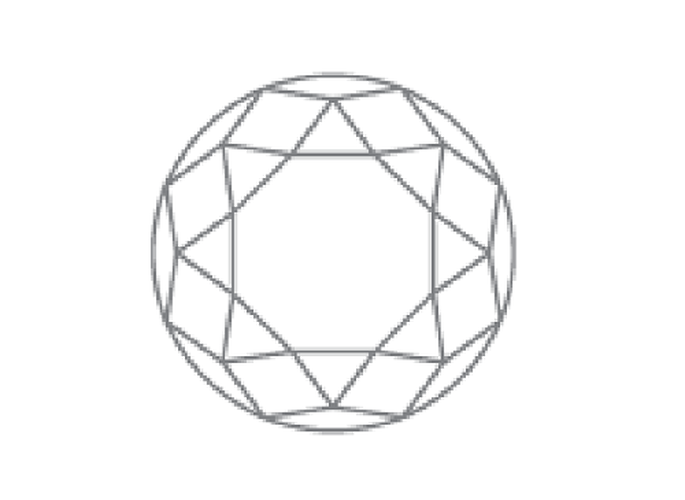Diamonds are truly beautiful for many reasons – their fire, lustre and sparkle! Some are rarer and more valuable than others but you might not be clued up on exactly why this is. By using the 4Cs, you can break diamonds down (theoretically, of course) into their most simple parts. So what are the 4Cs exactly?
CUT
The cut refers to a diamond’s reflective qualities. Don’t tell the others, but it’s actually the most important factor in determining a diamond’s value!
With a good cut, the diamond handles the light the most beautifully and means it will emit that coveted sparkle. The very highest grade is ‘Super Ideal’.
A ‘Super Ideal’ or other well-cut diamond will have angles that allow light to reflect back into the eye of the beholder. When well-cut and viewed head-on, light enters through the top of the precious stone and is reflected from one side to the other before bouncing back out of the diamond to be seen by the viewer. The light is called the ‘brilliance’.
It’s easier to understand when you compare a well-cut diamond to a poorly cut one. In a poorly cut diamond, light entering the diamond ‘leaks’ out from the sides or bottom rather than reflecting back to the eye. Thus, it emits less brilliance.
COLOUR
When it comes to colour with diamonds, it’s actually the lack of colour that’s imperative. Diamond colour is graded by how colourless (or white) the precious stone is. The colour grades range from D (colourless) right down to Z (a yellow tint). The whiter the diamond, the greater its value, making D graded diamonds the most rare and valuable.
Diamond colour can be categorised into four sections:
D-F: Colourless, so naturally the most valuable and desirable because of their rarity
G-I: Virtually no discernable colour is visible to the untrained eye
J-M: Very faint yellow tint, however – top tip alert – this can be minimised by selecting the correct mount
K-Z: Visible colour tint
Note that the fluorescence of a diamond can affect the colour a diamond appears to be. Simply, if a diamond exhibits fluorescence it means that its colour changes when exposed to ultraviolet radiation. If the diamond has this characteristic, it can appear to change in colour quite often. Diamonds producing a blue reaction usually appear whiter (or more colourless) under UV light whereas stones that produce a yellow reaction will appear even more yellow under some lighting conditions.
CARAT
Highly different from carrots, a carat is the standard unit of weight for a diamond. One carat is the equivalent of 0.2 grams and, you guessed it, the greater the weight of the diamond, the greater its value.
There are ‘magic weights’ when it comes to carat, which signify a price increase once reached; these are 1/2ct, 3/4ct. 1ct, 1.5cts, 2cts and so on. ‘Under-sizes’ are diamonds that weigh just below a magic weight and it’s often possible to save up to 30% when choosing these. As carat is a measure of weight and not strictly size, it is possible that the two stones can appear to be the same size when seen in direct comparison.
CLARITY
Finally, are you clear on clarity? The clarity of a diamond is how clear or flawless the gemstone is. Clarity is affected by flaws known as ‘inclusions’ on or in the stone – grades of clarity range from FL (flawless), the purest diamond grade, to l3 (inclusions visible to the naked eye). The less inclusions a diamond has, the more valuable it is.
Diamonds can have 2 types of flaw – inclusions and blemishes. Blemishes are surface flaws such as scratches and pits, whilst inclusions are flaws within the stone itself (these can include air bubbles, cracks, and non-diamond minerals). All flaws are called inclusions for the purpose of grading diamonds.
It’s also worth noting that diamonds are graded for clarity under 10 to 30 times magnification!
Here’s a titbit of knowledge – you can markedly reduce the cost of a diamond if you see that the inclusions will be hidden behind the mounting and therefore won’t affect the overall appearance of the stone.
They say you learn something new every day. Hopefully you’ve found this lesson about a girl’s best friend as interesting as we have! If you want to have a look at some stunning engagement rings to see what the different qualities of diamonds look like in their settings, have a look at this fabulous collection by Vashi.
Don't want to miss out on the latest trends for your wedding?
Subscribe to our newsletter.









Leave a comment